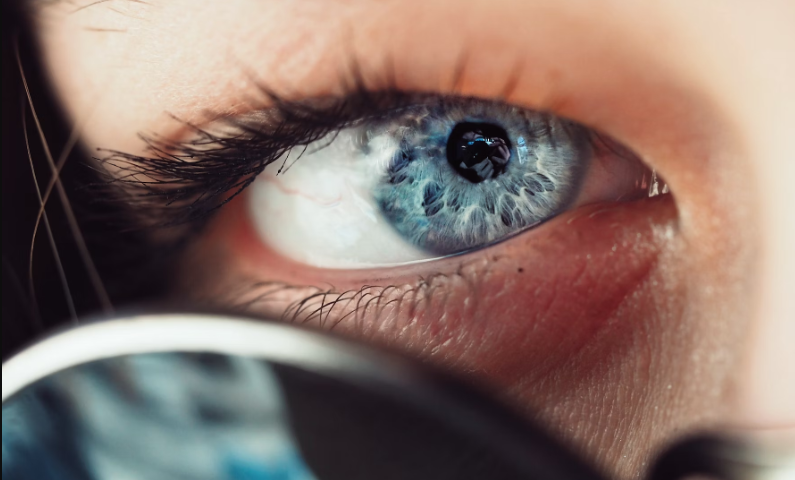Study Reveals Blue-Eyed People Have the Same Ancestor

© Adrian Swancar / Unsplash
Blue-eyed people have always been considered rare and a tiny bit more superior to ones with brown eyes. Turns out, it is not entirely the case. If you’ve got blue eyes, you can trace your roots back to one person who lived ages ago. Yes, a recent study has revealed that blue-eyed people actually share a common ancestor! But hey, do not worry! Uniqueness is more than just who came before you. You are still you, right? Even with blue eyes, it is fun to know that you have things in common with people all around the world.
Why Do People Have Blue Eyes?
Eye color, including blue eyes, is determined by the amount and type of pigments in the front part of the iris. It is also determined by the scattering of light by the turbid medium in the stroma of the iris. The color of the iris ranges from very light blue to dark brown. This depends on the amount and type of melanin present.

Blue eyes result from the scattering of light in the stroma, a thin layer of cells covering the iris. The same phenomenon is responsible for the sky appearing blue. In the case of eyes, the scattering of light is influenced by the presence of collagen in the stroma. This process is more effective in individuals with lighter-colored eyes.
Are Blue Eyes Rarer Than Brown?
Yes, blue eyes are generally rarer than brown eyes. The rarity is due to the genetic factors influencing eye color. Brown eyes are more common worldwide, while blue eyes result from a combination of genetic factors that lead to lower melanin content in the iris, allowing for greater light scattering and the perception of a blue color.
Why Are They Rare?
Multiple genes determine eye color. Additionally, two main pigments, melanin (brown) and lipochrome (yellow) contribute to the coloration of the iris. Blue eyes result from a lower amount of melanin, allowing for greater light scattering. Brown eyes are more prevalent worldwide, especially in populations with African, Asian, and Native American ancestry. In contrast, blue eyes are more commonly found in individuals of European descent.
Do Blue-Eyed People Really Share a Common Ancestor?
Recent research indicates that all individuals with blue eyes share a common ancestor who lived over 6,000 years ago. This ancestor possessed a genetic mutation responsible for the blue eye trait, which has since spread globally. Dr. Neville Sanjana told WIRED that this mutation occurred in the OCA2 gene. This gene is responsible for producing melanin, a protein in our eyes.

The blue-eye mutation originated in Europe around 10,000 years ago, and all current blue-eyed individuals are distantly related to this founder. While the OCA2 gene is crucial for eye color, there are approximately eight genes influencing eye color in humans. Even individuals with the brown-eyed version of OCA2 can have blue eyes due to the contributions of the other seven genes.
Is It Possible to Share a Common Ancestor?
Researchers link the common ancestry of blue-eyed individuals to a specific mutation because every person with blue eyes globally shares the exact same mutation. While more research is needed, there’s speculation that the mutation may have spread during human migration from Africa to Europe. This would potentially explain why blue eyes are predominantly found in people of European descent.
What Other Studies Had to Say
In 2008, researchers at the University of Copenhagen discovered the common ancestor of blue-eyed individuals. The study, led by Professor Hans Eiberg, examined variations in less common eye colors like green, supporting the idea of a single origin for the blue-eyed gene. Professor Eiberg explained that the shared ancestry of blue-eyed individuals is indicated by the inheritance of the same genetic switch at a specific location in their DNA.
Professor Hans Eiberg mentioned: “Meanwhile, people who have green eyes can be explained by the fact they have a reduced amount of melanin in the iris, which is very different from those with blue eyes. From this, we can conclude that all blue-eyed individuals are linked to the same ancestor. They have all inherited the same switch at exactly the same spot in their DNA.”
Why Do Some Babies Have Blue Eyes but Then They Disappear?
The phenomenon of babies having blue eyes that later change color is quite common and is primarily attributed to the way melanin, the pigment responsible for eye color, develops in the eyes over time.
At birth, many babies, regardless of their eventual eye color, have blue or gray eyes. This initial color is often due to the fact that their irises have not yet developed enough melanin. The process of melanin production in the iris continues after birth and can take several months to a few years to stabilize. As melanin levels increase, it affects the scattering of light in the eyes, leading to a change in eye color.
The specific genes inherited from the parents play a crucial role in determining the final eye color. While genetics provide a blueprint, the actual expression of these genes and the production of melanin are dynamic processes that unfold as the child grows.
How Blue Eyes Disappear
By around six months to a year of age, many babies’ eyes begin to settle into their permanent color, and this color change is more noticeable in light-eyed infants. However, it’s essential to note that some individuals may experience subtle changes in eye color throughout childhood and even into adolescence as melanin levels continue to adjust.
The transition from blue to different eye colors, such as brown or green, is a result of the ongoing development and distribution of melanin in the iris. This dynamic process explains why a baby’s eye color can transform over time, making the initial blue or gray hue a temporary stage in their eye color evolution.
Fun Facts About Blue Eyes
Here are some fun facts about blue eyes:
1. Global Distribution
While blue eyes are more commonly found in people of European descent, it’s intriguing that they can occur in individuals from various ethnic backgrounds. The distribution of eye colors is influenced by the complex interplay of multiple genes and historical migration patterns. Understanding the global prevalence of blue eyes adds a layer of diversity to the study of human genetics and population dynamics.
2. Rarity
Blue eyes are considered relatively rare compared to brown eyes, which are more prevalent worldwide. The rarity of blue eyes adds an element of uniqueness and distinctiveness. Individuals with blue eyes may find their eye color to be a notable and defining feature, contributing to the intrigue surrounding this genetic trait. The global prevalence of blue eyes is estimated to be around 8-10%, with brown eyes being more common.
3. Light Scattering
The captivating blue color of the eyes is a result of the scattering of light in the iris. This phenomenon, similar to the way the sky appears blue, is influenced by the amount of melanin in the iris. Understanding the science behind the coloration of blue eyes adds a touch of wonder to the intricate workings of human anatomy and vision.
4. Heterochromia
Heterochromia, the condition where an individual has two different colored eyes, is a captivating phenomenon associated with blue eyes. This condition can manifest as one eye being blue while the other is brown or another color. Heterochromia adds a touch of uniqueness and visual appeal, showcasing the diversity of eye colors within the human population.
5. Blue Eyes in Animals
Blue eyes are not exclusive to humans. Certain animals, particularly specific dog breeds like Siberian Huskies and Australian Shepherds, can also exhibit striking blue eyes. This shared trait between humans and animals adds an interesting cross-species perspective to the fascination with blue eyes.
6. Mood and Perception
Studies have explored the perception of individuals based on eye color, suggesting that people with lighter-colored eyes, including blue eyes, may be perceived as more trustworthy. The psychological and sociological aspects of eye color perception contribute to the broader understanding of how physical characteristics influence social interactions.
7. Blue-Eyed Neanderthals
Recent genetic studies on ancient DNA have provided intriguing insights into the eye color of Neanderthals. Some evidence suggests that Neanderthals may have had blue eyes, offering a glimpse into the shared genetic history between Homo sapiens and our extinct relatives. This connection adds a layer of complexity to the story of human evolution and the inheritance of eye color traits.
What color are your eyes?
You might also want to read: Stay Young Forever: Reverse Aging is Now Possible



